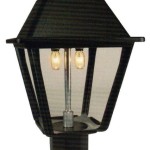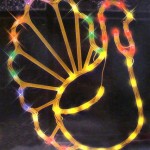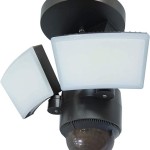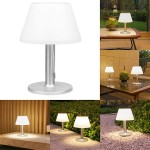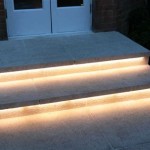Photo Sensors for Outdoor Lighting: Enhancing Efficiency and Safety
Outdoor lighting plays a crucial role in enhancing safety, security, and aesthetics. However, traditional lighting systems often remain illuminated throughout the night, leading to unnecessary energy consumption and potential light pollution. Photo sensors, also known as light-sensitive devices, offer a practical solution by automatically controlling outdoor lighting based on ambient light levels. These sensors revolutionize outdoor lighting, ensuring optimal illumination only when needed, contributing to energy efficiency, cost savings, and environmental sustainability.
How Photo Sensors Work
Photo sensors operate on the principle of photoconductivity, where the resistance of a semiconductor material changes in response to variations in light intensity. These sensors are typically composed of a light-sensitive element, such as a photodiode or phototransistor, that generates an electrical signal proportional to the incident light. When the light level falls below a predetermined threshold, the sensor triggers the activation of the connected lighting system. Conversely, when the ambient light rises above the threshold, the sensor deactivates the lights, effectively eliminating unnecessary illumination.
Photo sensors come in various types, each with specific characteristics and applications. Common types include:
- Cadmium Sulfide (CdS) Sensors: These sensors are relatively inexpensive and offer good sensitivity, making them suitable for general outdoor lighting applications. They are particularly effective in detecting low light levels but may exhibit slower response times.
- Photovoltaic (PV) Sensors: PV sensors convert light energy directly into electricity, eliminating the need for an external power source. They are ideal for low-power applications, such as solar-powered lights.
- Phototransistor Sensors: These sensors provide higher sensitivity and faster response times compared to CdS sensors. They are well-suited for applications requiring precise light level detection.
Benefits of Using Photo Sensors in Outdoor Lighting
Photo sensors bring numerous advantages to outdoor lighting systems, enhancing efficiency, safety, and sustainability:
1. Energy Efficiency and Cost Savings
By automatically turning on lights only when needed, photo sensors significantly reduce energy consumption. This leads to lower electricity bills and a reduced carbon footprint. Studies have shown that using photo sensors can result in energy savings of up to 50% compared to traditional lighting systems. The cost savings realized through energy efficiency often offset the initial investment in photo sensors, making them a financially viable option in the long run.
2. Enhanced Safety and Security
Properly illuminated outdoor areas contribute to enhanced safety and security. Photo sensors ensure that lights are activated when visibility is low, deterring potential crime and improving pedestrian navigation. They also minimize the risk of accidents by providing visibility during nighttime hours.
3. Environmental Sustainability
By reducing energy consumption, photo sensors contribute to environmental sustainability. They minimize carbon emissions associated with electricity generation and reduce light pollution, preserving natural ecosystems. This aligns with global efforts to mitigate climate change and protect biodiversity.
Types of Photo Sensors for Outdoor Lighting
Photo sensors for outdoor lighting are available in various configurations to suit different applications. Some common types include:
1. Dusk-to-Dawn Sensors
Dusk-to-dawn sensors automatically turn on lights at dusk and turn them off at dawn. They are widely used for street lighting, parking lot illumination, and residential security lights. These sensors typically feature a high sensitivity threshold, ensuring that lights are activated even in low light conditions.
2. Timed Sensors
Timed sensors offer greater control over lighting schedules. They allow users to set specific on and off times, enabling the customization of lighting patterns based on individual needs. For instance, timed sensors can be used to illuminate pathways during specific hours or to activate decorative lights during festive occasions.
3. Motion Sensors
Motion sensors combine photo sensing with motion detection. They activate lights only when movement is detected within their range, enhancing energy efficiency and providing additional security. Motion sensors are particularly effective for applications like security lighting, driveway illumination, and porch lights.
Choosing the Right Photo Sensor
Selecting the appropriate photo sensor for outdoor lighting requires considering several factors, including:
- Light Sensitivity Threshold: This refers to the light level at which the sensor activates or deactivates the lights. Choose a sensor with a sensitivity threshold that meets the specific requirements of the application. For example, streetlights may require a higher threshold than security lights.
- Response Time: The response time refers to the speed at which the sensor reacts to changes in light levels. A faster response time is desirable for applications where quick activation is crucial, such as motion-activated security lights.
- Installation Environment: Consider the environmental conditions where the sensor will be installed, such as temperature extremes, humidity, and exposure to sunlight. Choose a sensor designed to withstand the specific environmental challenges.
- Power Requirements: Some photo sensors require an external power source, while others are self-powered using solar energy. Consider the available power sources and energy requirements of the lighting system when selecting a sensor.
Conclusion
Photo sensors have become an integral part of modern outdoor lighting systems, offering numerous benefits in terms of energy efficiency, safety, and environmental sustainability. By automatically controlling outdoor lighting based on ambient light levels, these sensors optimize illumination, reduce energy consumption, and enhance security. The wide variety of photo sensors available allows for customization to meet specific lighting requirements, making them a versatile and valuable tool for outdoor lighting applications.
Auraglow Pir Motion Sensor Up Down Outdoor Wall Security Light Warminster Stainless Steel Led Lighting

Le Outdoor Dusk To Dawn Light Sensor Black Litecraft

Auraglow Black Arch Integrated Led Motion Sensor Pir Outdoor Wall Light Adobe Lighting

How To Add A Light Sensor Outdoor Lanterns The Navage Patch

Sambesi Pir Sensor Outdoor Wall Light

Motion Sensor And Dusk To Dawn Decorative Outdoor Lighting Deep Discount

Ip54 Outdoor Light Sensor Switch Photocontrol China Photocell Control Made In Com

Auraglow Pir Motion Sensor Stainless Steel Up Down Outdoor Wall Security Light Warminster Black Led Lighting

How To Add A Light Sensor Outdoor Lanterns The Navage Patch

Up And Down Pir Motion Sensor Wall Light For Outdoor Use
Related Posts


